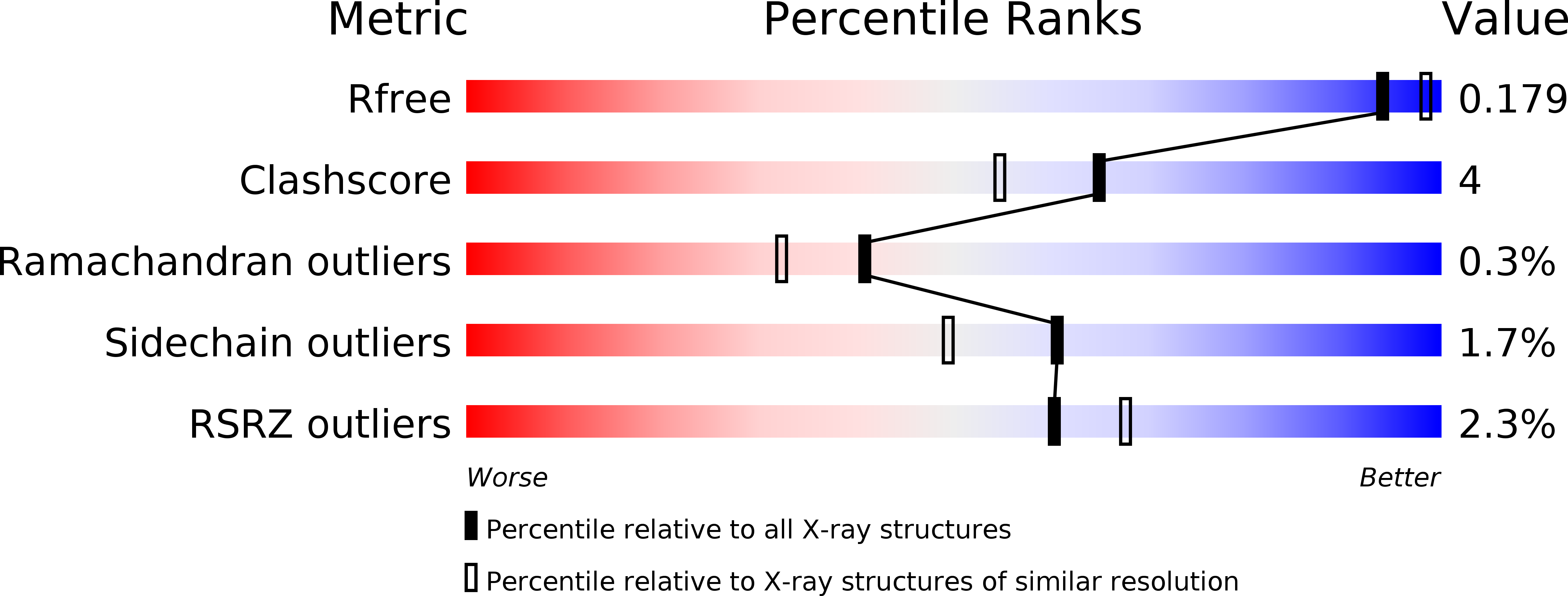Design of composite inhibitors targeting glutamate carboxypeptidase II: the importance of effector functionalities.
Novakova, Z., Cerny, J., Choy, C.J., Nedrow, J.R., Choi, J.K., Lubkowski, J., Berkman, C.E., Barinka, C.(2016) FEBS J 283: 130-143
- PubMed: 26460595
- DOI: https://doi.org/10.1111/febs.13557
- Primary Citation of Related Structures:
4P44, 4P45, 4P4B, 4P4D, 4P4E, 4P4F, 4P4I, 4P4J - PubMed Abstract:
Inhibitors targeting human glutamate carboxypeptidase II (GCPII) typically consist of a P1' glutamate-derived binding module, which warrants the high affinity and specificity, linked to an effector function that is positioned within the entrance funnel of the enzyme. Here we present a comprehensive structural and computational study aimed at dissecting the importance of the effector function for GCPII binding and affinity. To this end we determined crystal structures of human GCPII in complex with a series of phosphoramidate-based inhibitors harboring effector functions of diverse physicochemical characteristics. Our data show that higher binding affinities of phosphoramidates, compared to matching phosphonates, are linked to the presence of additional hydrogen bonds between Glu424 and Gly518 of the enzyme and the amide group of the phosphoramidate. While the positioning of the P1' glutamate-derived module within the S1' pocket of GCPII is invariant, interaction interfaces between effector functions and residues lining the entrance funnel are highly varied, with the positively charged arginine patch defined by Arg463, Arg534 and Arg536 being the only 'hot-spot' common to several studied complexes. This variability stems in part from the fact that the effector/GCPII interfaces generally encompass isolated areas of nonpolar residues within the entrance funnel and resulting van der Waals contacts lack the directionality typical for hydrogen bonding interactions. The presented data unravel a complexity of binding modes of inhibitors within non-prime site(s) of GCPII and can be exploited for the design of novel GCPII-specific compounds. Atomic coordinates of the present structures together with the experimental structure factor amplitudes were deposited at the RCSB Protein Data Bank under accession codes 4P44 (complex with JRB-4-81), 4P45 (complex with JRB-4-73), 4P4B (complex with CTT54), 4P4D (complex with MP1C), 4P4E (complex with MP1D), 4P4F (complex with NC-2-40), 4P4I (complex with T33) and 4P4J (complex with T33D).
Organizational Affiliation:
Institute of Biotechnology, Academy of Sciences of the Czech Republic, Prague, Czech Republic.






















